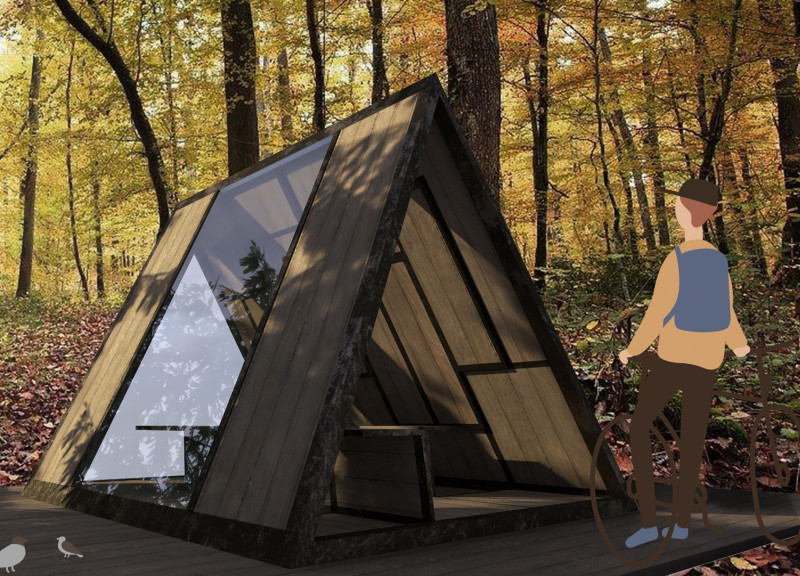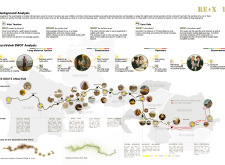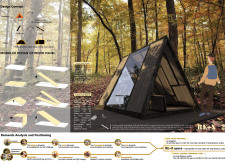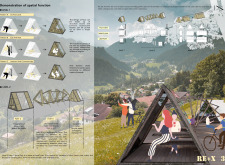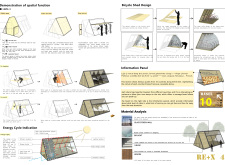5 key facts about this project
The design project along the EuroVelo 6 route focuses on providing a supportive space for long-distance cyclists. Set within the context of a popular cycling path in Europe, the structure is meant to enhance user experience through its multifunctional and modular approach. By offering areas for resting, dining, and social interaction, the design aims to meet various needs while promoting a sense of community among travelers.
Design Concept
The structure takes on a tent-like form, which is central to its design. This shape allows for shared use while also being cost-effective. The intention behind this concept is to accommodate the fluid nature of cycling tourism, where flexibility is necessary for different activities and interactions. The layout encourages cyclists to engage with one another, meaning communal connections are emphasized.
Materiality
Two types of wood board units are utilized for creating the walls and floors, reflecting a commitment to sustainable practices. By using renewable resources, the design minimizes its environmental impact. A glass curtain wall is another important feature. This aspect enhances visibility within the structure and connects the interior with the natural surroundings. Solar cells further improve energy efficiency, aligning with current sustainability trends in design.
Spatial Organization
Thoughtful organization divides the project into three distinct levels. The first level is designed for social interaction, featuring spaces for sitting and dining that encourage users to connect. On the second level, functional areas are provided for food preparation and relaxation, allowing cyclists to appreciate local views. The third level focuses on practical amenities, including restrooms and bicycle repair services, which are essential for meeting the needs of travelers using the route.
Cyclist Amenities
Additional features, such as information panels with cultural quotes from ten different countries along the E6 route, add depth to the user experience. The design of the bicycle shed demonstrates its adaptability, as it adjusts to varying visitor numbers while providing protection from different weather conditions. This element of the design highlights usability and ensures the structure integrates well with its environment, ultimately supporting the cycling experience.


